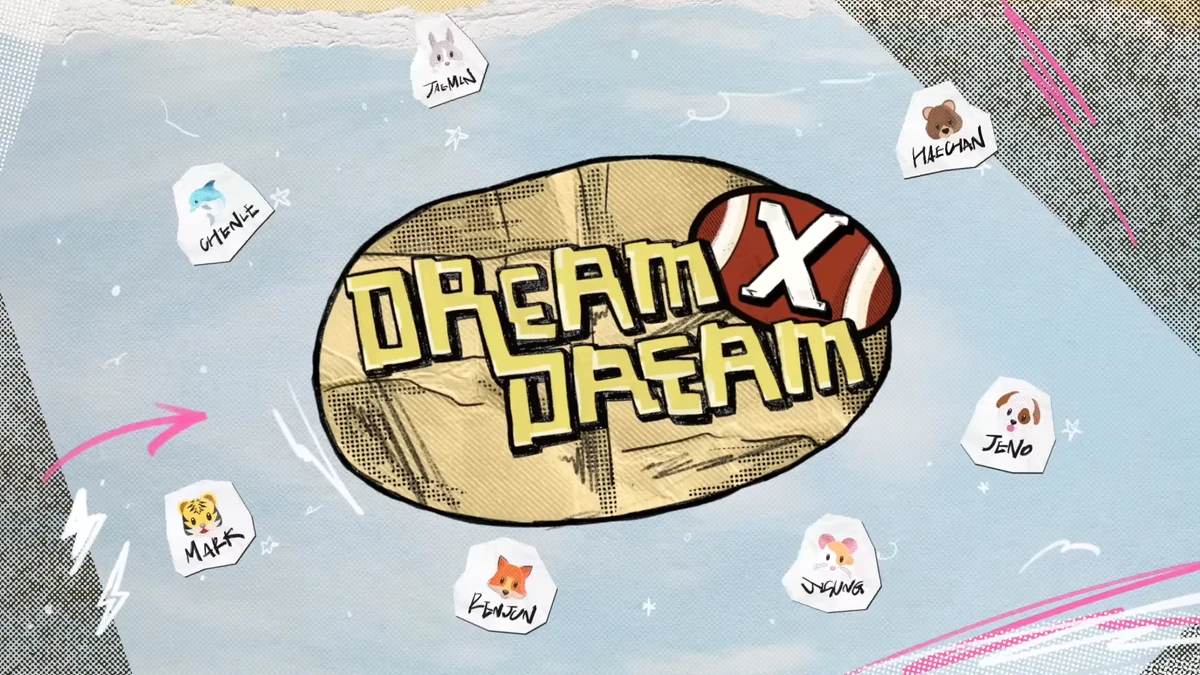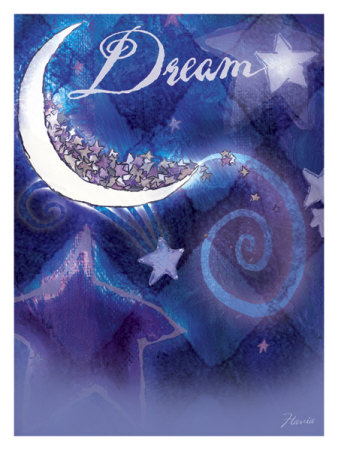Dreams, those ephemeral journeys of the sleeping mind, are a universal human experience. Yet, their interpretation, significance, and cultural resonance vary profoundly across the globe. In Japan, a nation steeped in ancient traditions, profound spiritual philosophies, and a vibrant artistic heritage, dreams hold a particularly rich and multifaceted position. From ancient Shinto beliefs to the introspective depths of Buddhism, from folk superstitions to the cutting edge of contemporary art and psychology, the Japanese relationship with dreams is a tapestry woven with threads of mysticism, introspection, and a keen appreciation for the transient beauty of life itself.
The Lexicon of the Somnambulant State: Yume and its Nuances
At the heart of the Japanese understanding of dreams lies the word 夢 (yume). While directly translating to "dream," yume carries a broader spectrum of meaning than its English counterpart. It can denote not only the nocturnal visions but also aspirations, hopes, illusions, and even the fleeting nature of reality itself. This linguistic flexibility immediately hints at a deeper cultural engagement with the concept.
Beyond yume, several other terms illuminate specific facets of the dreaming experience:
- 初夢 (Hatsuyume): The "first dream" of the New Year, arguably the most culturally significant dream in Japan, believed to foretell one’s fortune for the coming year.
- 悪夢 (Akumu): A nightmare, literally "bad dream."
- 正夢 (Seimu): A prophetic or precognitive dream, one that is believed to accurately predict future events.
- 夢想 (Musō): A vision or reverie, often implying a more spiritual or meditative state.
- 幻 (Maboroshi): Illusion, phantom, or vision, closely related to the dream state and often used interchangeably when discussing unreality.
These terms underscore a cultural framework that acknowledges not just the subconscious activity, but also the potential for dreams to transcend the personal, offering glimpses into the collective unconscious, spiritual realms, or even the future.
Ancient Roots and Spiritual Resonance: Shinto and Buddhism
The profound significance of dreams in Japan can be traced back to its earliest spiritual traditions. In Shinto, Japan’s indigenous animistic religion, the natural world is imbued with divine spirits (kami). Dreams, in this context, were often seen as direct communication channels between humans and the kami or ancestral spirits. Shamans and spiritual practitioners would often enter trance-like states, blurring the lines between waking and dreaming, to seek guidance or prophecies. Sacred sites and natural phenomena were sometimes revealed through dreams, leading to their veneration and the establishment of shrines. Dreams could also be interpreted as warnings or blessings from the spiritual realm, influencing daily decisions and community rituals.
The arrival of Buddhism in the 6th century CE introduced an even more intricate philosophical layer to the understanding of dreams. Central to Buddhist thought is the concept of impermanence (無常 mujō) and the illusory nature of existence (空 kū). Life itself is often likened to a dream (人生は夢 jinsei wa yume), a fleeting, transient experience that, while seemingly real, is ultimately without inherent substance. This perspective encourages detachment from worldly desires and a pursuit of enlightenment, which often involves seeing through the "dream" of reality.
Zen Buddhism, in particular, utilizes dream-like imagery and paradoxical riddles (公案 kōan) to challenge conventional thought and guide practitioners towards satori (enlightenment). Meditative practices like zazen can lead to states where the distinction between waking and dreaming dissolves, offering profound insights. In this framework, dreams are not just random neurological firings but potentially profound teachers, revealing the mind’s attachments and paving the way for spiritual liberation.
Folk Beliefs and Superstitions: The Power of Hatsuyume and the Baku
Beyond philosophical and religious interpretations, dreams are deeply embedded in Japanese folklore and daily superstitions. The Hatsuyume (初夢), the first dream of the New Year, stands out as a unique cultural phenomenon. People often go to great lengths to ensure a "good" Hatsuyume, sometimes even placing a picture of a treasure ship (宝船 takarabune) carrying the Seven Lucky Gods (七福神 Shichifukujin) under their pillow to invite auspicious dreams.
The most coveted Hatsuyume involves a specific sequence of three symbols, believed to bring the utmost good fortune:
- 富士 (Fuji): Mount Fuji, Japan’s iconic peak, symbolizes prosperity, good fortune, and immortality. Its majestic height suggests reaching great ambitions.
- 鷹 (Taka): A hawk, representing upward mobility, success, and the ability to seize opportunities. Its keen eyesight and soaring flight signify clear vision and swift action.
- 茄子 (Nasu): An eggplant, which sounds similar to a word meaning "to achieve" (成す nasu). It symbolizes fertility, abundant harvest, and the successful accomplishment of goals.
Dreaming of these in order (Fuji, Taka, Nasu) is considered the peak of good luck. Even dreaming of one or two is highly auspicious. This tradition highlights a deeply ingrained belief in the predictive power of dreams and the human desire to influence fate through auspicious imagery.
Another fascinating figure in Japanese folklore is the Baku (獏), a mythical creature that devours nightmares. Often depicted as having the trunk of an elephant, the eyes of a rhinoceros, the tail of an ox, and the paws of a tiger, the Baku is invoked by children who, after waking from a bad dream, might chant, "Baku-san, Baku-san, come and eat my dream!" This reflects a desire not just to forget bad dreams but to actively eliminate their negative influence, underscoring a belief in the tangible impact of dreams on one’s well-being.
Dreams in Japanese Arts and Literature: A Canvas for the Subconscious
Japanese art and literature have long served as a rich canvas for exploring the depths and mysteries of dreams. From classical epics to modern manga, dreams provide narrative devices, psychological insights, and thematic explorations of reality, illusion, and desire.
In the Heian Period (794-1185), a golden age of court culture, dreams frequently appeared in literary works. The Tale of Genji (源氏物語 Genji Monogatari), often considered the world’s first novel, features dreams as omens, revelations, and manifestations of characters’ subconscious anxieties and desires. For instance, Lady Rokujō’s vengeful spirit appears in dreams, haunting Genji’s lovers, blurring the lines between psychological torment and supernatural intervention. Dreams in this era were not merely symbolic but often treated as literal events occurring on another plane of existence.
Noh theater, with its ethereal and stylized performances, frequently utilizes dream narratives. Characters often exist in a liminal space between life and death, reality and illusion, where dreams serve as a vehicle for past spirits to manifest and seek resolution. The transient nature of life, a core Buddhist theme, is beautifully articulated through these dream-like narratives.
Moving into the modern era, authors like Natsume Sōseki (夏目漱石) profoundly explored the dreamscape. His collection Ten Nights of Dreams (夢十夜 Yume Jūya, 1908) delves into surreal and often unsettling dream sequences, each a philosophical parable on themes of love, death, time, and human nature. Sōseki’s work showcases dreams as a pathway to confronting existential questions and the hidden anxieties of the human psyche.
Contemporary Japanese literature continues this tradition. Authors like Haruki Murakami (村上春樹) frequently weave dream logic and surreal elements into their narratives, creating worlds where the boundaries between the real and the imagined are constantly shifting. His characters often grapple with dream-like quests and encounters, using the subconscious as a landscape for psychological exploration.
In manga and anime, dreams are ubiquitous. From the fantastical realms of Studio Ghibli films like Spirited Away (千と千尋の神隠し Sen to Chihiro no Kamikakushi), which operates on a dreamlike logic of transformation and spiritual encounters, to more direct explorations of the subconscious such as Satoshi Kon’s Paprika (パプリカ Papurika), dreams offer boundless possibilities for visual storytelling. Makoto Shinkai’s Your Name. (君の名は。 Kimi no Na wa.) beautifully uses dream-like body-swapping as a narrative device, underscoring themes of fate and connection. These works reflect a continued cultural fascination with the power of the subconscious to shape reality and connect individuals.
Modern Perspectives and Psychological Interpretations
While traditional beliefs and artistic expressions endure, modern Japan has also engaged with Western psychological interpretations of dreams. The theories of Freud and Jung have been introduced and discussed, offering new frameworks for understanding dreams as expressions of repressed desires, archetypes, and the collective unconscious. Dream analysis, self-help books on dream interpretation, and online resources are readily available, blending traditional Japanese wisdom with contemporary psychological insights.
However, even with the influence of Western psychology, a distinctly Japanese perspective often persists. There’s a tendency to view dreams not just as individual psychological phenomena but also as interconnected with the wider spiritual and collective human experience. The emphasis on harmony, intuition, and the subtle nuances of communication often colors how dreams are discussed and understood in a modern Japanese context. Dreams can be seen as tools for self-reflection, spiritual growth, and maintaining balance in one’s life, rather than solely as symptoms of psychological distress.
Conclusion: An Enduring Mystery
The dream in Japanese culture is far more than a mere nocturnal event. It is a profound cultural artifact, a multifaceted concept woven into the fabric of its language, history, religions, folklore, and art. From the auspicious Hatsuyume to the philosophical depths of Buddhist thought, and from the fantastical narratives of anime to the introspective explorations of literature, dreams serve as a constant reminder of the elusive nature of reality, the power of the subconscious, and the enduring human quest for meaning.
As Japan continues to evolve, its relationship with dreams remains a dynamic interplay between ancient wisdom and modern understanding. The fleeting, often enigmatic nature of dreams perfectly mirrors the Japanese aesthetic of mono no aware (物の哀れ), the poignant awareness of the impermanence of things. In this delicate balance, dreams continue to offer a unique window into the Japanese soul, a tapestry of illusion and reality, hope and apprehension, forever inviting contemplation and wonder.


